Using a bread machine to make sourdough bread is a convenient and efficient way to ensure that your bread is not only delicious but also healthy. Sourdough bread is made with a natural leavening agent, also known as a sourdough starter, which is a mixture of flour and water that has been fermented by wild yeasts and lactic acid bacteria. This fermentation process gives sourdough bread its characteristic tangy flavor and chewy texture. In this article, we’ll be providing you with a step-by-step recipe for making organic sourdough bread using a bread machine. From ingredients to instructions, we’ve got you covered.
Organic bread making in a bread machine involves using organic ingredients, such as organic flour, yeast, sweeteners, oils, herbs, and spices, to create delicious and nutritious bread. The bread machine offers a convenient and efficient way to make bread, with options for different crust preferences and dietary needs. Additionally, it can be used to make sourdough bread using a natural leavening agent. The process includes measuring ingredients accurately, ensuring fresh yeast, and adjusting temperature, time and settings of the bread machine. It’s important to use the freshest ingredients and follow the manufacturer’s instructions for best results. This thread provided a comprehensive guide on how to make organic bread in a bread machine.
Key Points
- Organic bread making is a way to use organic ingredients, produce without the use of synthetic pesticides and fertilizers, which means it’s not only better for the environment but also for your health.
- Tips for organic bread making include using the freshest flour possible and measuring ingredients accurately.
- Troubleshooting strategies for organic bread making include ensuring fresh yeast and the right temperature, using bread flour instead of all-purpose flour, giving bread enough time to rise, checking oven temperature, and using the right pan size.
- Organic bread machine vs traditional bread making: bread machine is more convenient and efficient but traditional method allows more control and a hands-on experience
- Organic bread machine recipes to try: Whole Wheat, Sourdough, Multi-Grain, Herb and Cheese, Cinnamon Raisin, and Sun-dried Tomato and Basil.
- Organic gluten-free options: Oat, Buckwheat, Almond, Quinoa and Coconut bread
- Organic bread machine for small/large loaves: most bread machines have the ability to make small, medium or large loaves, depending on the capacity of the bread machine.
- Organic bread machine for different crust preferences: most bread machines have the option to choose between different crust colors, by adjusting the baking time and temperature.
- Organic bread machine for different dietary needs: most bread machines have a variety of settings and options that can accommodate different dietary needs such as gluten-free, low-carb, or vegan options.
- Organic bread machine for sourdough bread: Not all bread machines have a specific setting for sourdough bread, but many can make it by using the ‘dough’ setting and baking the dough in a conventional oven or using the “bake only” setting.
Choosing the Right Organic Flour for Bread Making
When it comes to bread making, choosing the right flour is crucial. And when it comes to organic flour, you have a few options to choose from. But before we dive into the different types of organic flour, let’s talk about why organic flour is the way to go.
Organic flour is produced without the use of synthetic pesticides and fertilizers, which means it’s not only better for the environment but also for your health. But, just because it’s organic, doesn’t mean it’s automatically the best choice for bread making.
First, you have all-purpose organic flour. This is a versatile flour that can be used for a variety of baking needs, including bread making. However, it doesn’t have the protein content of bread flour, which is important for gluten development and structure of the bread.
Next, you have bread flour. This is the best choice for bread making as it has a high protein content that helps the bread rise and gives it that perfect texture.
If you’re looking for a whole-grain option, organic whole wheat flour is a great choice. However, it does have a stronger flavor than white flour and can make the bread denser.
Lastly, you have specialty flours like organic spelt or kamut flour. These flours have a unique flavor and can add a nice twist to your bread, but they also have a lower gluten content, so they may not rise as well.
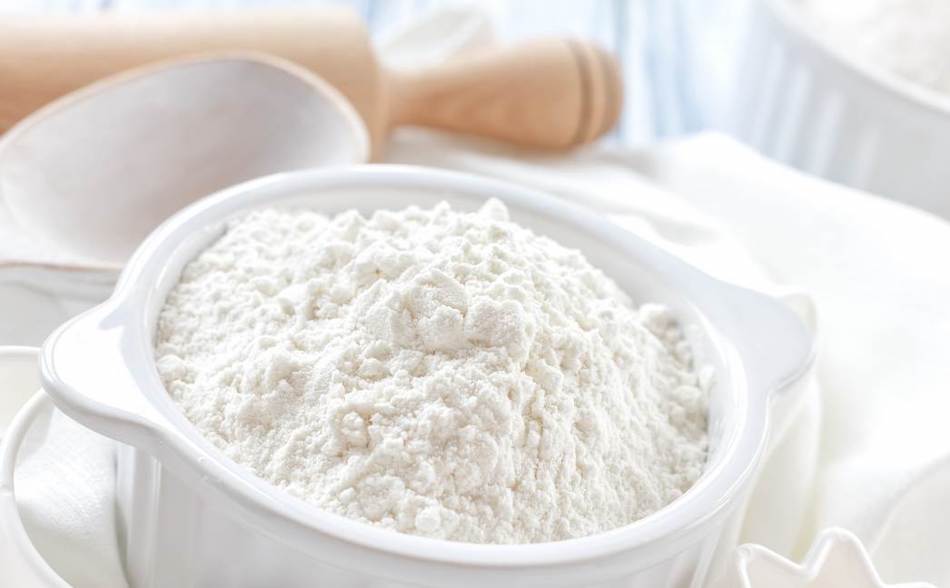
Organic Yeast vs. Wild Yeast for Bread Making
Yeast is a crucial ingredient that makes the bread rise. And when it comes to organic yeast, you have two options to choose from: organic yeast and wild yeast. But, before we dive into the differences between the two, let’s talk about why organic yeast is the way to go.
Organic yeast is produced without the use of synthetic pesticides and fertilizers, which means it’s not only better for the environment but also for your health. But, just because it’s organic, doesn’t mean it’s automatically the best choice for bread making.
Organic yeast is the most common type of yeast used in bread making. This yeast is easy to find in most grocery stores and it’s reliable. It’s a quick-acting yeast that ferments the dough quickly, which makes it perfect for busy bakers.
Wild yeast is a type of yeast that’s found naturally in the environment, it can be caught by making a “starter” from flour and water and left in a warm place for few days. This type of yeast is a bit more challenging to work with, but it can give your bread a unique, complex flavor.
So when it comes to organic yeast for bread making, you have two options to choose from. If you want a reliable, quick-acting yeast, go for organic yeast. But, if you’re feeling adventurous and want to try something different, give wild yeast a try. Remember, always use the freshest yeast for the best results.
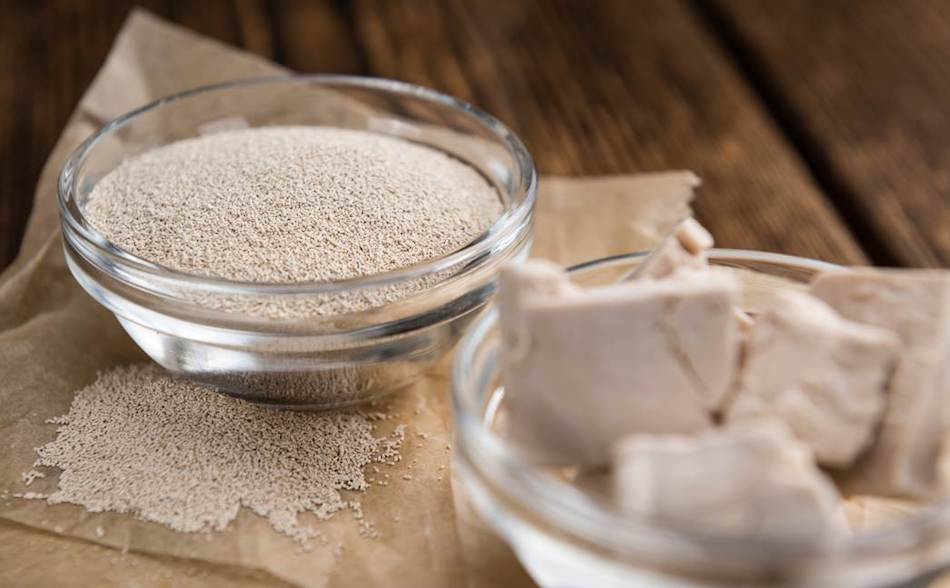
Organic Sweeteners for Bread Making
Sweeteners are often added to give bread a nice flavor and help the yeast ferment. And when it comes to organic sweeteners, you have a few options to choose from. But, before we dive into the different types of organic sweeteners, let’s talk about why organic sweeteners are the way to go.
Organic sweeteners are produced without the use of synthetic pesticides and fertilizers, which means it’s not only better for the environment but also for your health. But, just because it’s organic, doesn’t mean it’s automatically the best choice for bread making.
First, you have organic honey. This is a natural sweetener that adds a nice flavor to bread and it also helps the yeast ferment. However, it can be expensive and it’s not vegan.
Next, you have organic maple syrup. This is another natural sweetener that adds a nice flavor to bread, it’s also vegan, but it can be expensive too.
Organic molasses is a good option too, it adds a nice flavor to bread and it’s also vegan, but it can be difficult to find in some areas.
Lastly, you have organic sugar. This is a common sweetener that can be used in bread making, it’s easy to find and it’s vegan, but it doesn’t add any flavor to bread.
So when it comes to organic sweeteners for bread making, you have a few options to choose from. Each one has its own unique flavor and characteristics, so it’s up to you to decide which one you prefer. And remember, always use the freshest sweeteners for the best results.
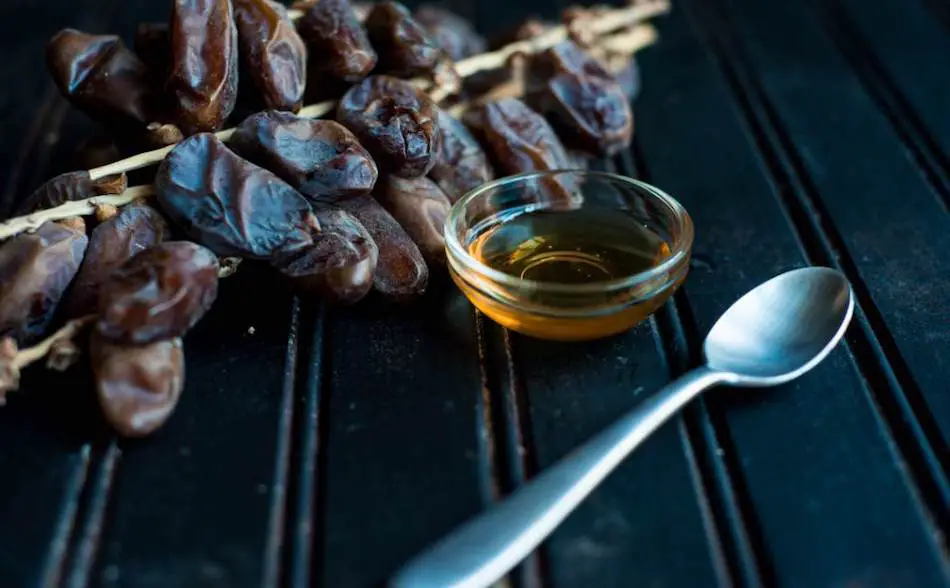
Organic Oils and Fats for Bread Making
When it comes to bread making, oils and fats are often added to give bread a nice texture and flavor. And when it comes to organic oils and fats, you have a few options to choose from. But, before we dive into the different types of organic oils and fats, let’s talk about why organic oils and fats are the way to go.
Organic oils and fats are produced without the use of synthetic pesticides and fertilizers, which means they’re not only better for the environment but also for your health. But, just because they’re organic, doesn’t mean they’re automatically the best choice for bread making.
Organic olive oil is a great option for bread making as it adds a nice flavor and helps to keep the bread moist. However, it can be expensive and it has a distinct flavor, which may not be suitable for some bread recipes.
Then you have organic coconut oil. This is another great option for bread making as it adds a nice flavor and helps to keep the bread moist. It’s a bit more affordable than olive oil, but it has a distinct flavor, which may not be suitable for some bread recipes.
Organic butter is another good option, it adds a nice flavor and helps to give bread a nice texture, but it’s not vegan.
Lastly, you have organic vegetable oil, this is a common oil that can be used in bread making, it’s easy to find and it’s vegan, but it doesn’t add any flavor to bread.
Organic Herbs and Spices to Enhance Bread Flavor
Herbs and spices are often added to give bread a nice flavor and aroma. And when it comes to organic herbs and spices, you have a wide range of options to choose from. But, before we dive into the different types of organic herbs and spices, let’s talk about why organic herbs and spices are the way to go.
Organic herbs and spices are produced without the use of synthetic pesticides and fertilizers, which means they’re not only better for the environment but also for your health. But, just because they’re organic, doesn’t mean they’re automatically the best choice for bread making.
Organic rosemary is a herb adds a nice, earthy flavor to bread and it pairs well with savory breads, such as olive bread or rosemary focaccia.
Then there’s organic thyme. This herb adds a nice, woodsy flavor to bread and it pairs well with savory breads, such as herb bread or focaccia.
Organic sage and oregano are good options too, they add a nice, robust flavor to bread and they pair well with savory breads, such as herb bread or focaccia.
You have organic fennel, cumin, and caraway seeds, these seeds add a nice, warm flavor to bread, and they pair well with savory breads, such as rye bread or focaccia.
Lastly, you have organic cinnamon, nutmeg, and cardamom, these spices add a nice, warm flavor to bread and they pair well with sweet breads, such as cinnamon raisin bread or cardamom buns.
Organic Whole Grains to Add Nutrition to Bread
Adding whole grains to the dough can not only enhance the flavor but also increase the nutritional value of the bread. And when it comes to organic whole grains, you have a few options to choose from. But, before we dive into the different types of organic whole grains, let’s talk about why organic whole grains are the way to go.
Organic whole grains are produced without the use of synthetic pesticides and fertilizers, which means they’re not only better for the environment but also for your health. They are also minimally processed, retaining all of their nutrients, making them a more nutritious option than refined grains.
Organic whole wheat flour is a great option for bread making as it adds a nice flavor, a nutty taste and a denser texture to the bread. However, it can make the bread denser and heavier than white flour.
Then you have organic oats. This is another great option for bread making as it adds a nice texture and a nutty flavor to the bread. It’s also a source of fiber, protein, vitamins and minerals.
Organic quinoa, barley, and bulgur are also good options, they add a nice texture, a nutty flavor and a source of fiber, protein, vitamins and minerals to the bread.
Organic flaxseeds, chia seeds, and sesame seeds are also great options, they add a nice texture, a nutty flavor and a source of fiber, protein, vitamins and minerals to the bread.
So adding organic whole grains to your bread making, you have a few options to choose from.
Organic Bread Machine Settings and Options
When it comes to organic bread making, choosing the right settings and options on your bread machine is crucial. But, before we dive into the different settings and options, let’s talk about why using an organic bread machine is the way to go.
An organic bread machine allows you to use organic ingredients, produce without the use of synthetic pesticides and fertilizers, which means it’s not only better for the environment but also for your health. But, just because it’s organic, doesn’t mean it’s automatically the best choice for bread making.
First, you have the option to choose between different loaf sizes. This is important because it allows you to make a loaf that’s the perfect size for your household. Some bread machines can make small, medium or large loaves.
Next, you have the option to choose between different crust colors. This is important because it allows you to make a loaf that has the perfect crust color that you prefer, whether it’s light, medium or dark.
The bread machine also have different settings for different types of bread, such as basic, whole wheat, French, Italian, etc. This is important because it allows you to make a loaf that has the perfect texture and flavor that you prefer.
You also have the option to add fruits, nuts, seeds or other ingredients at specific times during the bread-making process, this is important because it allows you to add extra flavor and nutrition to your bread.
Lastly, you have the option to delay the start time, this is important because it allows you to have fresh bread ready when you wake up in the morning or when you get home from work.
So when it comes to using an organic bread machine, it’s important to understand the different settings and options that are available to you.
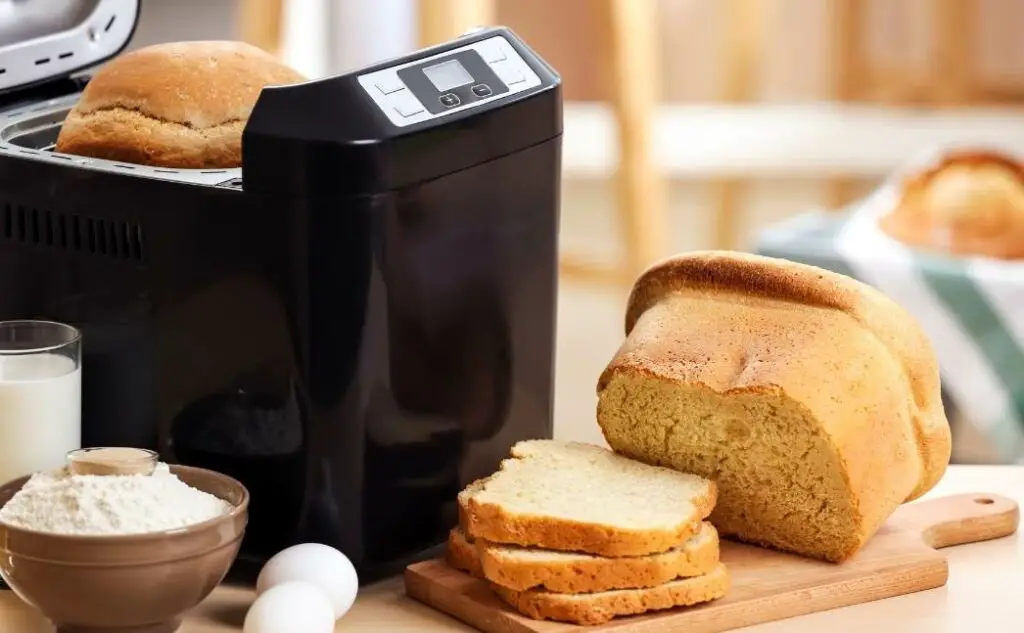
Organic Bread Making Tips and Troubleshooting
When it comes to organic bread making, it’s important to be aware of a few specific tips and troubleshooting strategies. But, before we dive into these tips, let’s talk about why organic bread making is the way to go.
Organic bread making allows you to use organic ingredients, produce without the use of synthetic pesticides and fertilizers, which means it’s not only better for the environment but also for your health. But, just because it’s organic, doesn’t mean it’s automatically the best choice for bread making.
When using organic flour, it’s important to use the freshest flour possible. Organic flour has less preservatives than non-organic flour, so it can go stale quicker. Also, make sure to measure your ingredients accurately. Baking is a science, and even small variations in ingredients can affect the final product.
If your bread is not rising properly, it could be a problem with the yeast. Make sure you’re using fresh yeast and that it’s at the right temperature. If your bread is too dense, it could be a problem with the flour or the rising time. Make sure to use bread flour instead of all-purpose flour, and give your bread enough time to rise.
If your bread has a hard crust, it could be a problem with the oven temperature. Make sure your oven is at the correct temperature and that your bread is placed in the center of the oven.
If your bread has a uneven shape, it could be a problem with the pan size. Make sure you’re using a pan that’s the right size for your loaf and that you’re shaping the dough correctly before baking.
Organic Bread Machine vs. Traditional Bread Making
There are two main ways to do it: using a bread machine or traditional method. Both have their own advantages and disadvantages, and when it comes to organic bread making, it’s important to understand the difference between the two methods. But, before we dive into the comparison, let’s talk about why organic bread making is the way to go.
Organic bread making allows you to use organic ingredients, produce without the use of synthetic pesticides and fertilizers, which means it’s not only better for the environment but also for your health. But, just because it’s organic, doesn’t mean it’s automatically the best choice for bread making.
A bread machine allows you to make bread with minimal effort and time. With a bread machine, you can add the ingredients, set the machine, and come back a few hours later to a freshly baked loaf of bread. It also has settings and options that allow you to customize the bread to your own preferences.
Traditional bread making involves more time, effort, and skill. It requires you to mix, knead, rise, shape, and bake the bread manually. But, traditional bread making allows you to have more control over the process and the final product, and it also allows you to have a more hands-on experience of bread making.
Both the bread machine and traditional method have their own advantages and disadvantages. The bread machine is more convenient and efficient, but traditional bread making allows you to have more control and a more hands-on experience. It’s up to you to decide which method you prefer. And remember, always use the freshest ingredients and follow the manufacturer’s instructions for the best results.
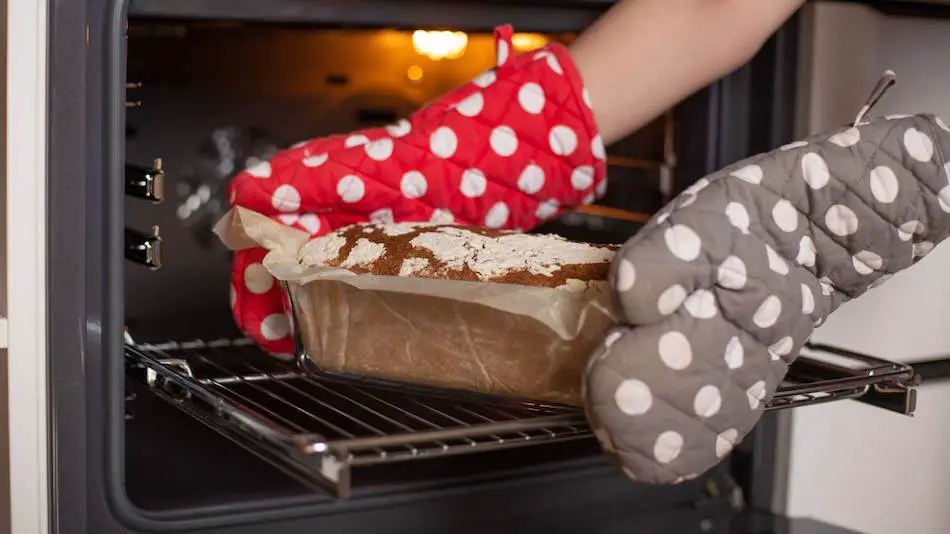
Organic Bread Machine Recipes to Try
When it comes to organic bread making, it’s important to use organic ingredients in your recipes to ensure that your bread is not only delicious but also healthy. Here are a few organic bread machine recipes to try:
- Organic Whole Wheat Bread: This recipe uses organic whole wheat flour, organic honey, and organic yeast to create a nutritious and wholesome loaf of bread.
- Organic Sourdough Bread: This recipe uses organic flour, water, and wild yeast to create a tangy and flavorful loaf of bread.
- Organic Multi-Grain Bread: This recipe uses a combination of organic whole wheat flour, organic oats, organic flaxseed and organic quinoa, to create a nutritious and flavorful loaf of bread.
- Organic Herb and Cheese Bread: This recipe uses organic flour, organic herbs, organic olive oil and organic cheese to create a savory and flavorful loaf of bread.
- Organic Cinnamon Raisin Bread: This recipe uses organic flour, organic cinnamon, organic raisins, and organic sugar to create a sweet and delicious loaf of bread.
- Organic Sun-dried Tomato and Basil Bread: This recipe uses organic flour, organic sun-dried tomatoes, organic basil and organic olive oil to create a savory and flavorful loaf of bread.
Organic Bread Machine Gluten-Free Options
Gluten-free options are becoming increasingly popular as more people are looking for gluten-free alternatives to traditional wheat flour. And when it comes to organic bread making, it’s important to use organic gluten-free ingredients to ensure that your bread is not only delicious but also healthy. Here are a few organic gluten-free bread machine options to try:
- Organic Gluten-Free Oat Bread: This recipe uses organic gluten-free oats, organic flaxseed, and organic xanthan gum to create a nutritious and wholesome loaf of bread.
- Organic Gluten-Free Buckwheat Bread: This recipe uses organic gluten-free buckwheat flour, organic chia seeds, and organic yeast to create a flavorful and dense loaf of bread.
- Organic Gluten-Free Almond Bread: This recipe uses organic gluten-free almond flour, organic eggs, and organic honey to create a moist and nutty loaf of bread.
- Organic Gluten-Free Quinoa Bread: This recipe uses organic gluten-free quinoa flour, organic flaxseed, and organic yeast to create a nutritious and flavorful loaf of bread.
- Organic Gluten-Free Coconut Bread: This recipe uses organic gluten-free coconut flour, organic eggs, and organic honey to create a moist and flavorful loaf of bread.
- Organic Gluten-Free Sorghum Bread: This recipe uses organic gluten-free sorghum flour, organic flaxseed, and organic yeast to create a nutritious and flavorful loaf of bread.
Organic Bread Machine vs. Store Bought Bread
When it comes to bread making, there are two main options: making your own bread using a bread machine or buying bread from a store. Both have their own advantages and disadvantages, and when it comes to organic bread making, it’s important to understand the difference between the two options. But, before we dive into the comparison, let’s talk about why organic bread making is the way to go.
Organic bread making allows you to use organic ingredients, produce without the use of synthetic pesticides and fertilizers, which means it’s not only better for the environment but also for your health. But, just because it’s organic, doesn’t mean it’s automatically the best choice for bread making.
Making your own bread using a bread machine gives you the ability to control the ingredients that go into your bread, ensuring that the bread is organic and free of preservatives. Additionally, it allows you to customize the bread to your own preferences.
Store-bought bread is convenient and easily accessible. However, it can be difficult to find organic bread options at the store, and even when you do, they can be more expensive than non-organic bread. Additionally, store-bought bread often contains preservatives, which could be harmful to your health.
Organic Bread Machine for Small/Large Loaves
The size of the loaf is an important factor to consider. Whether you’re cooking for a small family or a large one, having the ability to make a loaf that’s the perfect size for your household is crucial. And when it comes to organic bread making, using a bread machine that can make small, medium or large loaves is a great way to ensure that your bread is not only delicious but also healthy.
When it comes to organic bread machines, most models have the ability to make small, medium, or large loaves, so you can choose the right size for your household. The size of the loaf will depend on the capacity of the bread machine, so make sure to check the manufacturer’s specifications before purchasing.
With a small loaf capacity, you can make a loaf that is perfect for a small family or for those who prefer to have smaller portions. A medium loaf is perfect for a family of 4-5, and a large loaf is perfect for a larger family or for those who like to have leftovers.
Also, some bread machines also have the option to make a vertical or horizontal loaf, which can affect the shape of the bread, giving you even more options to customize the bread to your own preferences.
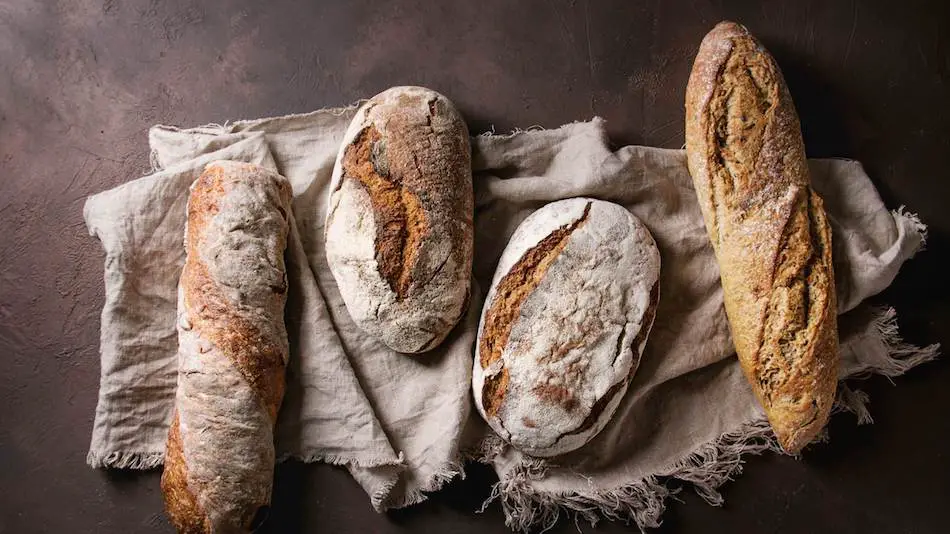
Organic Bread Machine for Different Crust Preferences
The crust of the bread is an important factor to consider. Different people have different crust preferences, whether it’s a light, medium or dark crust. And when it comes to organic bread making, using a bread machine that can produce bread with different crust colors is a great way to ensure that your bread is not only delicious but also healthy.
Most bread machines have the option to choose between different crust colors, so you can make a loaf that has the perfect crust color that you prefer. This is done by adjusting the baking time and temperature of the bread machine. A light crust is achieved by baking the bread at a lower temperature and for a shorter time, while a dark crust is achieved by baking the bread at a higher temperature and for a longer time.
Also, some bread machines also have a “crust control” option, which allows you to choose the crust color you prefer, whether it’s light, medium or dark.
Table 5: Organic Gluten-Free Bread Machine Options
| Recipe | Description |
|---|---|
| Oat | Uses organic gluten-free oats, organic flaxseed, and organic xanthan gum. |
| Buckwheat | Uses organic gluten-free buckwheat flour, organic chia seeds, and organic yeast. |
| Almond | Uses organic gluten-free almond flour, organic eggs, and organic honey. |
| Quinoa | Uses organic gluten-free quinoa flour, organic flaxseed, and organic yeast. |
| Coconut | Uses organic gluten-free coconut flour, organic eggs, and organic honey. |
Organic Bread Machine for Different Dietary Needs
When it comes to bread making using a bread machine, it’s important to consider different dietary needs, such as gluten-free, low-carb, or vegan options. And when it comes to organic bread making, using a bread machine that can accommodate different dietary needs is a great way to ensure that your bread is not only delicious but also healthy.
Most bread machines have a variety of settings and options that can accommodate different dietary needs such as gluten-free, low-carb, or vegan options. For gluten-free bread making, many bread machines have a gluten-free setting that uses gluten-free flours such as almond flour, coconut flour, and oat flour. Additionally, many bread machines also have low-carb settings that use low-carb flours such as almond flour and coconut flour.
For vegan bread making, many bread machines have a vegan setting that uses plant-based ingredients such as flax eggs, non-dairy milk, and vegetable oil instead of eggs, milk and butter.
Organic Bread Machine for Sourdough Bread
Sourdough bread is a delicious and nutritious option. And when it comes to organic bread making, using a bread machine that can make sourdough bread is a great way to ensure that your bread is not only delicious but also healthy.
Sourdough bread is made with a natural leavening agent, also known as a sourdough starter, which is a mixture of flour and water that has been fermented by wild yeasts and lactic acid bacteria. This fermentation process gives sourdough bread its characteristic tangy flavor and chewy texture.
While not all bread machines have a specific setting for sourdough bread, many bread machines can make sourdough bread by using the ‘dough’ setting and then baking the dough in a conventional oven. Before starting, you need to have a sourdough starter, which can be made at home or purchased from a bakery. Once you have your starter, you can then use it to make the dough and place it in the bread machine.
Another way to make sourdough bread using a bread machine is by using the “bake only” setting, where you can prepare the dough separately, let it ferment and then put it into the bread machine to bake it.

Here is a Step-by-Step Recipe for Making Organic Sourdough Bread Using a Bread Machine:
Ingredients:
- 1 cup of organic sourdough starter (can be made at home or purchased from a bakery)
- 3 cups of organic bread flour
- 1 1/2 cups of filtered water
- 1 tsp of organic sea salt
- Additional flour for dusting (optional)
Steps:
- In a large mixing bowl, combine the sourdough starter, bread flour, and filtered water. Mix until well combined.
- Cover the bowl with a clean kitchen towel or plastic wrap and let the dough rest for about 8-12 hours, or until it has doubled in size.
- After the dough has risen, add the sea salt and knead the dough for a few minutes until it becomes smooth and elastic.
- Shape the dough into a round ball and place it in the bread machine pan.
- Use the dough setting on your bread machine and start the machine.
- Once the dough has finished the kneading process, you can take it out and shape it into a loaf. Place the loaf in a greased loaf pan and let it rise again for about 1-2 hours.
- Preheat your oven to 425 degrees F (220 degrees C)
- Once the loaf has risen, place it in the preheated oven and bake for about 45-50 minutes, or until the crust is golden brown and sounds hollow when tapped.
- Once the bread is done, take it out of the oven and let it cool on a wire rack for at least 30 minutes
Table 4: Organic Bread Machine Recipes
| Recipe | Description |
|---|---|
| Whole Wheat | Uses organic whole wheat flour, organic honey, and organic yeast. |
| Sourdough | Uses organic flour, water, and wild yeast. |
| Multi-Grain | Uses a combination of organic whole wheat flour, organic oats, organic flaxseed and organic quinoa. |
| Herb and Cheese | Uses organic flour, organic herbs, organic olive oil, and organic cheese. |
| Cinnamon Raisin | Uses organic flour, organic cinnamon, organic raisins, and organic sugar. |
| Sun-dried Tomato and Basil | Uses organic flour, organic sun-dried tomatoes, organic basil and organic olive oil. |

